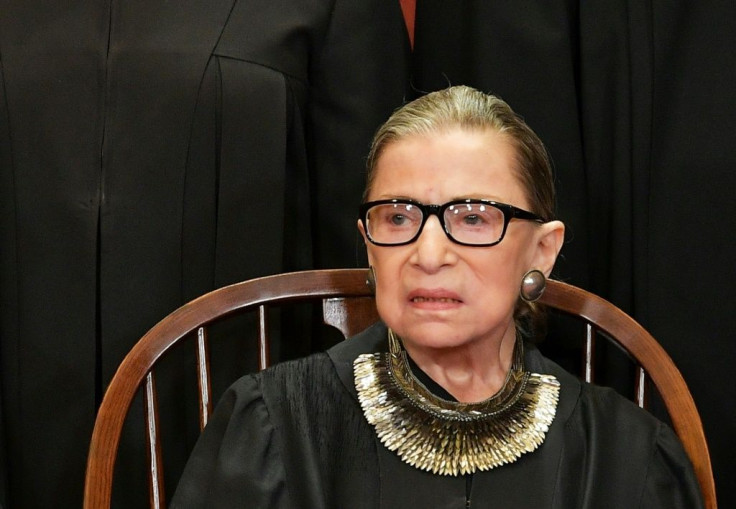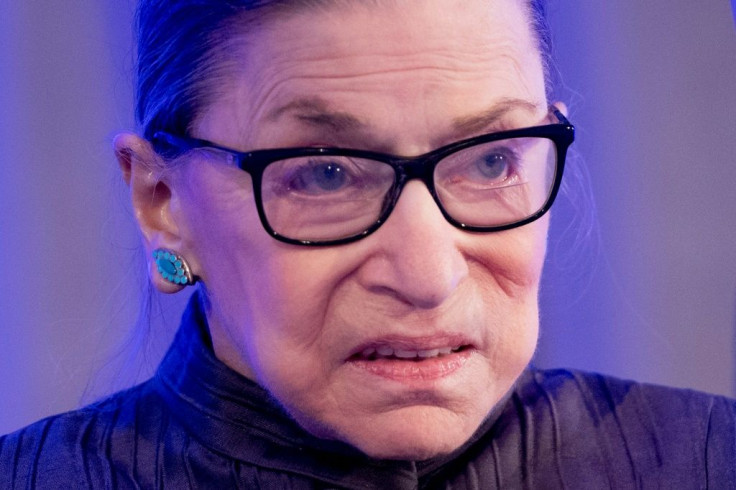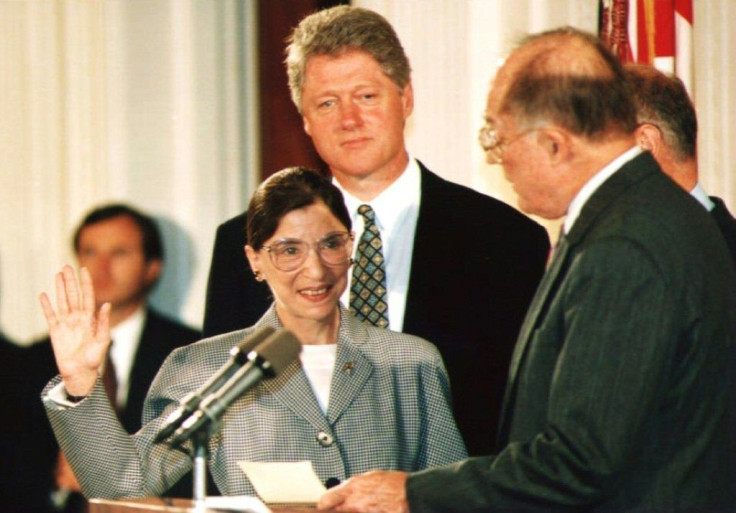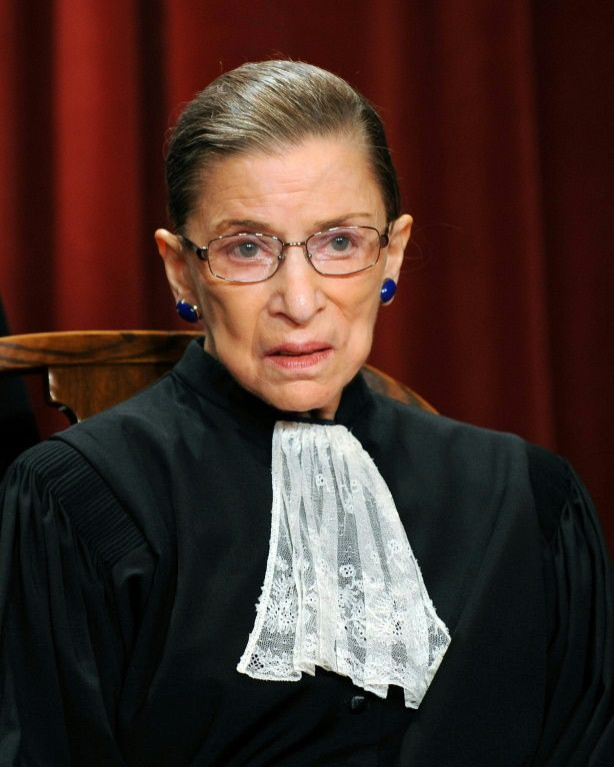Ruth Bader Ginsburg: Progressive Icon Of US Supreme Court, Dies At 87

Ruth Bader Ginsburg was small in stature, but her influence was enormous -- both as a champion of women's rights early in her career and as a progressive force on the US Supreme Court.
Ginsburg, only the second woman to serve as a justice on America's highest court, died Friday at the age of 87, after a long battle with pancreatic cancer.
The Brooklyn native, sporting her signature embellished collars or frilly jabots, was the doyenne of the court, and the de facto leader of the left-leaning coalition on a court with a conservative majority.
She did not hesitate to speak her mind: in her minority opinion in Bush v. Gore, which resolved the 2000 presidential election in favor of George W. Bush, she fired off a simple "I dissent."
The phrase became part of her unlikely legacy as a pop culture icon: late in life, she was affectionately known as the "Notorious RBG," a riff on the moniker of slain rapper The Notorious B.I.G.

Her face framed by dark-rimmed glasses adorned T-shirts, mugs and baby outfits. Her life was the subject of two films in 2018: the documentary "RBG" and the scripted "On the Basis of Sex."
"As bleak as things may seem, I have seen so many changes in my lifetime," Ginsburg told an audience in North Carolina in September 2019.
"Opportunities opened for people of whatever race, religion and, finally, gender."


Born Ruth Bader on March 15, 1933 into a family of Russian Jewish immigrants at the height of the Great Depression, she lost her mother to cancer when she was a teenager.
But before that, her mother encouraged Ginsburg to pursue her studies. She went to Cornell University, where she was a student of Vladimir Nabokov and met her husband Martin.
The couple enrolled together in Harvard Law School -- she juggled school and raising their first child, daughter Jane, while her husband battled cancer.

She eventually finished her studies at Columbia University after her husband accepted a position at a law firm in New York. The couple later had a second child, James.
Though Ginsburg was one of the top students in her graduating class, she struggled to get her start in the legal profession.
"I had three strikes against me. One, I was Jewish. Two, I was a woman. But the killer was I was a mother of a four-year-old child," she said in an interview with CBS in 2016.

She ended up in academia, teaching at Rutgers and Columbia Universities as one of the few women on the staff.
In the 1970s, the American Civil Liberties Union recruited Ginsburg to litigate sex discrimination cases.

While she suspected she was tapped because of her gender -- "sex discrimination was regarded as a woman's job," she said -- Ginsburg nevertheless flourished.
She eventually became a general counsel for the ACLU and went on to win five of the six gender discrimination cases she argued before the Supreme Court.
Fellow Supreme Court Justice Elena Kagan put it simply: she said Ginsburg "changed the face of American anti-discrimination law."

After a stint as a federal appeals court judge, Ginsburg was nominated to the Supreme Court by then-president Bill Clinton in 1993 and easily confirmed by the Senate, becoming the second woman and the first Jewish woman justice.
She was seen by legal scholars as a slow, steady presence on the bench: she did not seek to overhaul precedent in one fell swoop, but instead attacked specific parts of the law in question.
Ginsburg wrote her first majority opinion in the 1996 case of United States v. Virginia, which ruled that Virginia Military Institute's policy of only admitting men was unconstitutional.
As the court shifted to a conservative majority, Ginsburg used her dissents effectively.
She even wore what she called a "dissenting collar" -- metallic and armor-like. Women purchased necklace versions of it as a sartorial show of support.
Ginsburg formed an unlikely friendship with fellow justice Antonin Scalia, a conservative "originalist" who believed the constitution should be interpreted as intended at the time of its writing.
While they were polar opposites on nearly every question of jurisprudence, they shared a love of civil liberties, fine-tuned legal writing... and opera.
Their friendship was even put on stage in the comic opera "Scalia/Ginsburg."
The tiny woman with a low ponytail was a force to be reckoned in her career, and was seen by many as an inspirational figure.
Her exercise regimen was turned into a workout book. Halloween costumes were popular for young girls and women alike. Sometimes, she was depicted wearing a gold crown.
For Shana Knizhnik, one of the creators of the Notorious RBG blog, the justice's appeal transcended generational differences.
"She's fought for ideals that even today may seem pretty radical, and at the time were simply unheard of," Knizhnik said.
Ginsburg battled cancer a number of times over the years and in 2010, her husband died.
In November 2018, she broke a few ribs in a fall. Subsequent tests revealed cancerous nodules in her lungs. They were removed a month later.
Then in August 2019, the court announced she had undergone another round of cancer treatment, this time to treat her pancreas.
When asked about retirement, she cited the example of John Paul Stevens, who did not leave the court until he was 90, and said she would only leave when she was no longer capable of working.
Ginsburg's replacement will be nominated by President Donald Trump, a man she criticized for his "ego" and whose impact on the court she said she did not "even want to contemplate."
Trump has already appointed two conservative justices during his time in office, Neil Gorsuch and Brett Kavanaugh.
© Copyright AFP {{Year}}. All rights reserved.





















